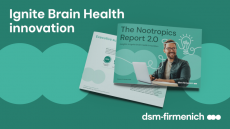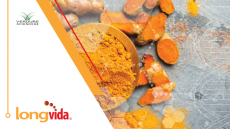A cup of lab-grown Joe: researchers release proof of concept for cell-cultured coffee

Building upon the 2021 research, Heiko and his team published their findings in the Journal of Agriculture and Food Chemistry in November 2023. The findings consider sensory profiles as well as caffeine content, according to the study.
Using coffee cells from Coffea arabica leaves to place in a lab-scale bioreactor, the team freeze-dried the cells and later ground them into a powder and roasted them under three different conditions.
The researchers noted that longer roasting times resulted in a darker color similar to dark roast coffee beans, which is an important factor for flavor perception.
“We are working with coffee cells, which means that we are initially taking parts of a coffee plant and we propagate individual cells in an artificial medium, which is composed of a sugar source and some minerals and some growth regulator … under sterile conditions,” Rischer said.
The resulting biomass is 100% coffee cells, while the roasting process, Rischer noted, is like roasting a green coffee bean.
“What we get is the color of a dark brown powder that looks very much like ground up, roasted coffee beans that can be brewed in a conventional way like in a filter. And what you get is a dark brown brew that tastes like coffee,” he said.
Upon examining the finished brew’s flavor composition and sensory profiles, a team of trained taste-testers concluded that the lab-grown coffee exhibited similar levels of bitterness and sourness to conventional coffee; while the lab-grown coffee’s aroma had more roasted, burnt sugar and smokey scents.
Rischer explained that certain factors, like plant variety and harvest methods, will impact flavor composition. For this study, C. arabica was grown in a medium, which is “composed of many ingredients,” that can affect its composition, he added.
“What you have to have are so-called flavor precursors in that material, and then with the roasting you bring out … the actual flavor from these precursors,” he said.
However, prior to the roasting, the precursor does not contain flavor, Rischer noted, adding that “the [roasting] process affects a lot of what kind of flavors you can get.”
Citing various sustainability challenges within the coffee industry, from water and land resources to fair labor, Rischer intends for cell-cultured coffee to address these challenges, explaining that this process will yield significantly more than farmed coffee, which provides one to two harvests a year, while lab-grown coffee can yield one harvest a month.
With 84% of global coffee exports coming from 10 countries and 68% of all coffee imported by the U.S., EU, UK and Canada, highlighting an opportunity for cell-cultured coffee to potentially diversify and reinforce the coffee supply chain.
Yet, VTT’s proof of concept is only the beginning. Rischer noted that commercialization of cell-cultured coffee would require a holistic collaboration along the supply chain.
“[Commercialization] is the direction we would like to see. As a research institute, our mission is basically to help the industry innovate and to be visionary … that’s basically the starting point why we came up with this kind of concept. In the next step, we would need to partner with experts from all kinds of fields,” he said.











